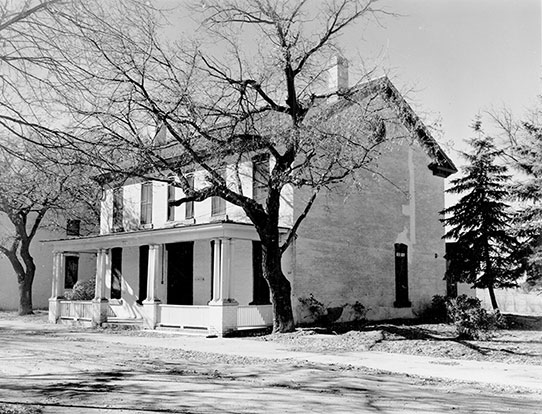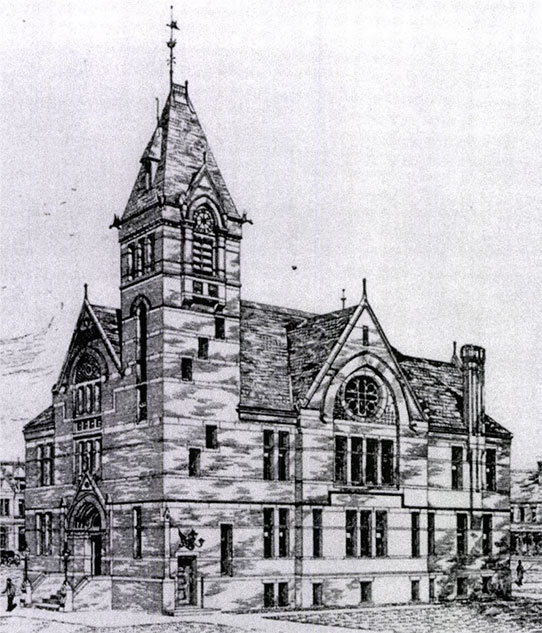It’s autumn and a delightful time to wander the urban centers of North Dakota and beyond. In urban landscapes we find a variety of brick patterns and stone work that over time have lent much of the historic character to downtown areas. Below is a historic masonry bingo card that you can print out and take along to identify some of the fascinating details found in common buildings. It includes brickwork details, stone masonry, and concrete masonry units (CMUs).
See if you and your friends can bingo in your walk around town by finding matching examples in your area.1 Check off the examples you see and try to get a straight line of four spaces across, down, or diagonally, and the first one to do so wins.
Brats, beer, bricks, and bingo anyone?
Glossary
Buttered Joint – A thin masonry joint made by applying a thin layer or mortar to four sides of a brick.
Common Brick – Softer bricks, which are less uniform and regular than stock bricks. Stock bricks resist weathering better than common brick.
Concrete Masonry Unit (CMU) – Concrete blocks were introduced in the early 1900s with presses that could manufacture a single CMU when the operator was able to exert significant pressure on the press bar. A rusticated (with uneven texture made to simulate rock) version was popular by about 1916, was mass-produced, and used in foundations.
Brick Bonds
American or Common Bond – A pattern or brickwork in which every third, fifth, sixth, or seventh course consists of headers (short end of brick exposed), and the other courses.
Herringbone Bond – A variety of ways of assembling bricks in diagonal zigzag fashion.
Running or Stretcher Bond – A bond in which all bricks are laid lengthwise.
Quoin – A hard stone or brick used to reinforce an external corner or edge of a wall, often of a contrasting color to other stones or bricks.
Spalling – The flaking of brickwork due to frost, chemical action, or movement of the building structure.
Historic Masonry at State Historic Sites
Fort Totten State Historic Site

Workers making bricks at Fort Totten, Dakota Territory. SHSND 0670-024
Ceramic bricks have been manufactured in what is now North Dakota since 1868 at Fort Totten. Suitable clay was near the shore of Devils Lake, and workers employed by the US Army placed mud by hand into wooden forms. These green bricks were carefully stacked to allow air to circulate, and then previously burnt bricks surrounded those to be fired. The burnt bricks were covered with clay, and a fire was meticulously maintained to bake the bricks. The structure was a scove kiln and the method very primitive. Many of the buildings still standing at Fort Totten are of the common or soft brick produced under basic conditions and completed in the late 1860s or early 1870s.2

Commanding Officers Quarters, Fort Totten. SHSND 00137 0046
Stutsman County Courthouse State Historic Site, Jamestown

Stutsman County Courthouse line drawing detail by N.C. Koch and Company, Milwaukee, Wisconsin, found in A&HP Site 32SN0045.
The Stutsman County Courthouse, built in 1883, is an imposing example of Gothic Revival architecture with massive masonry walls on an ashlar granite foundation. “Father of Jamestown” Anton Klaus started a large brick-making plant in 1882, and the dark, cranberry-colored bricks came from his facility on the east side of the James River about 1.5 miles east of Jamestown. The manufactured bricks are still soft by modern standards, but much more durable than those at Fort Totten.3
De Morès Memorial Park, Medora

Photo by Lorna Meidinger.
De Morès Memorial Park is in the City of Medora. Sandstone is the featured material in the walls, paving blocks, fountain, seats, and small shed. Constructed in the 1940s, the park was a Civilian Conservation Corps project led by National Park Service landscape architect Weldon Gratton. The sandstone came from a quarry near Sentinel Butte.
1 Many thanks to Colorado Preservation Inc. and the Masonry Restoration and Identification Workshop held in Denver on July 26, 2019, for the masonry bingo idea.
2 Frank E. Vyzralek, “Brick Making in North Dakota, 1868–1998,” p. 1, MSS 10553 sub-series III Brickmaking, North Dakota State Archives, State Historical Society of North Dakota, Bismarck.
3 Ibid., p. 3.


